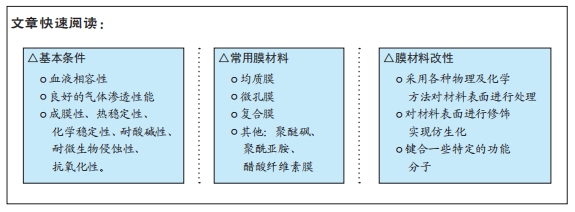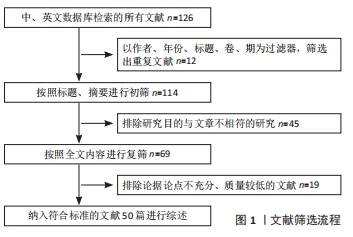[1] GIBBON JH JR. Application of a mechanical heart and lung apparatus to cardiac surgery. Minn Med. 1954;37(3):171-185.
[2] 谭小苹,裴觉民.膜式人工肺及其应用[J].中国胸心血管外科临床杂志,1994,1(1):59-61.
[3] 王风婷,罗峰.膜式氧合器中膜材料的研究进展[J].中国组织工程研究与临床康复,2008,12(10):1927-1930.
[4] FIORE A, PISCITELLI M, ADODO DK, et al. Successful use of Extracorporeal Membrane Oxygenation (ECMO) in postpartum as rescue therapy in a woman with Covid-19. J Cardiothorac Vasc Anesth. 2020;S1053-0770(20)30793-X.
[5] SAVARIMUTHU S, BINSAEID J, HARKY A. The role of ECMO in COVID-19: Can it provide rescue therapy in those who are critically ill? J Card Surg. 2020;35(6): 1298-1301.
[6] WIEDEMANN D, BERNARDI MH, DISTELMAIER K, et al. Recommendations for extracorporeal membrane oxygenation (ECMO) in COVID-19 patients. Wien Klin Mag. 2020:1-6.
[7] 文志红,邬素华,陈维涛.医用肝素化抗凝血高分子材料的研究进展[J].塑料,2005,34(2):26-30.
[8] 潘长江,王进,黄楠,等.等离子体表面接枝改性聚对苯二甲酸乙二醇酯的血液相容性研究[J].功能材料,2003,34(4):468-470.
[9] MOTOMURA T, MAEDA T, KAWAHITO S, et al. Development of Silicone Rubber Hollow Fiber Membrane Oxygenator for ECMO. Artif Organs. 2003;27(11):1050-1053.
[10] 段亚峰,潘峰.膜式氧合器用聚丙烯中空纤维膜超微结构[J].纺织学报,2005,26(3):29-31,37.
[11] LEONARD RJ. The transition from the bubble oxygenator to the microporous membrane oxygenator. Perfusion. 2003;18(3):179-183.
[12] 罗本喆.热致相分离法制备聚丙烯微孔膜的研究[D].南京:南京工业大学,2005.
[13] 罗本喆,张军,王晓林.热致相分离法制备聚烯烃微孔膜研究进展[J].高分子通报,2005(3):42-48.
[14] ESPEED K, NEIL R, CHRIS H, et al. Poly-methyl pentene oxygenators have improved gas exchange capability and reduced transfusion requirements in adult extracorporeal membrane oxygenation. ASAIO J. 2005;51(3):281-287.
[15] EVSEEV AK, ZHURAVEL SV, ALENTIEV AY, et al. Membranes in extracorporeal blood oxygenation technology. Membr Membr Technol. 2019;1(4):201-211.
[16] NIIMI Y, UEYAMA K, YAMAJI K, et al. Effects of ultrathin silicone coating of porous membrane on gas transfer and hemolytic performance. Artif Organs. 1997;21(10):1082-1086.
[17] 许少波.中空纤维膜的涂敷及用于人工肺膜组件的性能评价[D].广州:暨南大学,2006.
[18] ROSLAN RA, LAU WJ, ZULHAIRUN AK, et al. Improving CO2/CH4 and O2/N2 separation by using surface-modified polysulfone hollow fiber membranes. J Polym Res. 2020;27(5):1-14.
[19] 王松.呼吸机膜材料的选择及其生物相容性[J].中国组织工程研究, 2012,16(12):2221-2224.
[20] 吕权.平板式聚砜膜的制备、表征、改性及其在膜式人工肺中的应用[D].南京:南京大学,2013.
[21] MOTOHIRO N, HIROYOSHI K, SHOJI N, et al. Development of a novel polyimide hollow-fiber oxygenator. Artif Organs. 2004;28(5):487-495.
[22] KANNO M, KAWAKAMI H, NAGAOKA S, et al. Biocompatibility of fluorinated polyimide. J Biomed Mater Res. 2002;60(1):53-60.
[23] 牛彩云.抗菌型醋酸纤维素复合膜的制备及性能研究[D].太原:中北大学,2016.
[24] HU CB, SOLOMON DD, SHIELDS NL. Method for rendering a substrate surface antithrombogenic: U.S. Patent 07/215974.1989-12-09.
[25] YUAN Y, ZHANG J, AI F, et al. Surface modification of SPEU films by ozone induced graft copolymerization to improve hemocompatibility. Colloids Surf B Biointerfaces. 2003;29(4):247-56.
[26] TIAN X, QIU YR. 2-methoxyethylacrylate modified polysulfone membrane and its blood compatibility. Arch Biochem Biophys. 2017;631:49-57.
[27] TIAN X, QIU YR. 2-methoxyethylacrylate modified polyurethane membrane and its blood compatibility. Prog Biophys Mol Biol. 2019;148:39-46.
[28] 殷海燕,刘耀东,黄鑫,等.聚砜膜的低温等离子体改性及其在膜式氧合器的应用[J].膜科学与技术,2014,34(4):50-55.
[29] ZHENG Z, WANG W, HUANG X, et al. Fabrication, characterization, and hemocompatibility investigation of polysulfone grafted with polyethylene glycol and heparin used in membrane oxygenators. Artif Organs. 2016;40(11):E219-E229.
[30] WANG W, ZHENG Z, HUANG X, et al. Hemocompatibility and oxygenation performance of polysulfone membranes grafted with polyethylene glycol and heparin by plasma-induced surface modification. J Biomed Mater Res B Appl Biomater. 2017;105(7):1737-1746.
[31] WANG W, HUANG X, YIN H, et al. Polyethylene glycol acrylate-grafted polysulphone membrane for artificial lungs: plasma modification and haemocompatibility improvement. Biomed Mater. 2015;10(6):065022.
[32] 刘耀东,黄鑫,王伟平,等.聚砜中空纤维膜式人工肺的等离子体改性研究[J].膜科学与技术,2015,35(4):35-39.
[33] 何淑漫,周健.抗凝血生物材料[J].化学进展,2010,22(4):760-772.
[34] YE SH, ARAZAWA DT, ZHU Y, et al. Hollow fiber membrane modification with functional zwitterionic macromolecules for improved thromboresistance in artificial lungs. Langmuir. 2015;31(8):2463-2471.
[35] XIANG T, ZHANG LS, WANG R, et al. Blood compatibility comparison for polysulfone membranes modified by grafting block and random zwitterionic copolymers via surface-initiated ATRP. J Colloid Interface Sci. 2014;432:47-56.
[36] UKITA R, WU K, LIN X, et al. Zwitterionic poly-carboxybetaine coating reduces artificial lung thrombosis in sheep and rabbits. Acta Biomater. 2019;92:71-81.
[37] 黄小军.聚丙烯腈膜分离材料的磷脂化改性[D].杭州:浙江大学, 2006.
[38] PIERI M, TURLA OG, CALABRO MG, et al. A new phosphorylcholine-coated polymethylpentene oxygenator for extracorporeal membrane oxygenation: a preliminary experience. Perfusion. 2013;28(2):132-137.
[39] PARK JH, FERHAN AR, JACKMAN JA, et al. Modulating conformational stability of human serum albumin and implications for surface passivation applications. Colloids Surf B Biointerfaces. 2019;180:306-312.
[40] HESS C, WIEGMANN B, MAURER AN, et al. Reduced thrombocyte adhesion to endothelialized poly 4-methyl-1-pentene gas exchange membranes-a first step toward bioartificial lung development. Tissue Eng Part A. 2010;16(10):3043-3053.
[41] POLK AA, MAUL TM, MCKEEL DT, et al. A biohybrid artificial lung prototype with active mixing of endothelialized microporous hollow fibers. Biotechnol Bioeng. 2010;106(3):490-500.
[42] AMOAKO KA, MONTOYA PJ, MAJOR TC, et al. Fabrication and in vivo thrombogenicity testing of nitric oxide generating artificial lungs. J Biomed Mater Res A. 2013;101(12):3511-3519.
[43] EL-FERZLI GT, ANDUKURI A, ALEXANDER G, et al. A nitric oxide-releasing self-assembled peptide amphiphile nanomatrix for improving the biocompatibility of microporous hollow fibers. ASAIO J. 2015;61(5):589-595.
[44] 文志红,邬素华,陈维涛.医用肝素化抗凝血高分子材料的研究进展[J].塑料,2005,34(2):26-30.
[45] 赵肖.中空纤维膜的层层自组装制备及其在膜式氧合器中的应用研究[D].广州:暨南大学,2016.
[46] WANG LR, QIN H, NIE SQ, et al. Direct synthesis of heparin-like poly(ether sulfone) polymer and its blood compatibility. Acta Biomater. 2013;9(11):8851-8863.
[47] 方波,江体乾.新型类肝素物质的研究—水溶性磺化羟丙基壳聚糖的研制[J].华东理工大学学报,1998,24(3):45-49.
[48] LIU TM, XU JJ, QIU YR. A novel kind of polysulfone material with excellent biocompatibility modified by the sulfonated hydroxypropyl chitosan. Mater Sci Eng C Mater Biol Appl. 2017;79:570-580.
[49] KAAR JL, OH HI, RUSSELL AJ, et al. Towards improved artificial lungs through biocatalysis. Biomaterials. 2007;28(20):3131-3139.
[50] OH HI, YE SH, JOHNSON CA JR, et al. Hemocompatibility assessment of carbonic anhydrase modified hollow fiber membranes for artificial lungs. Artif Organs. 2010;34(5):439-442.
|


